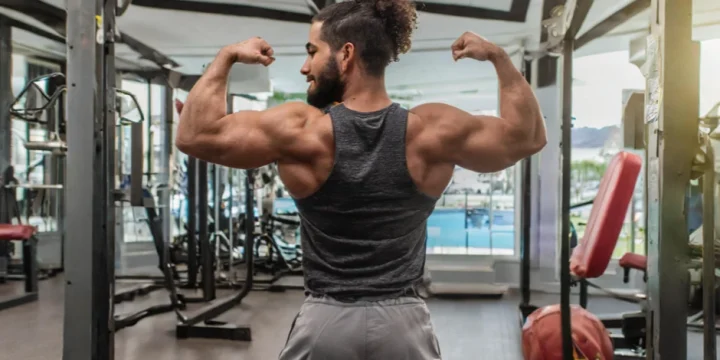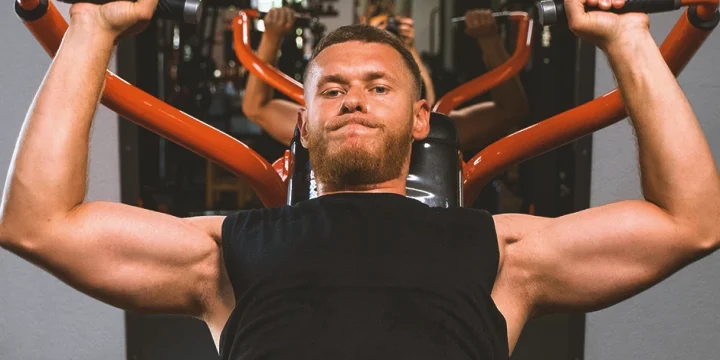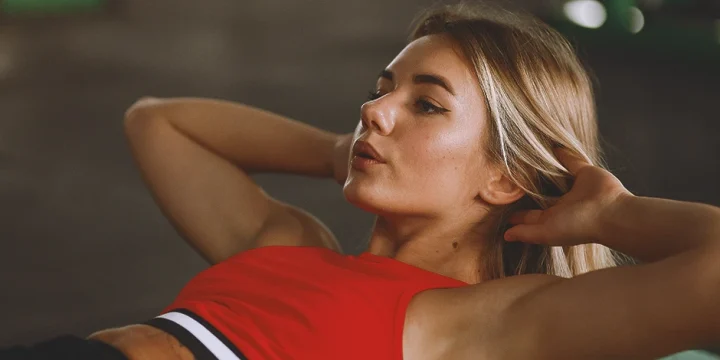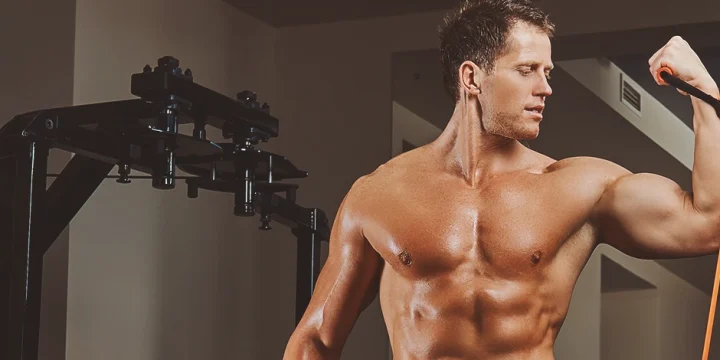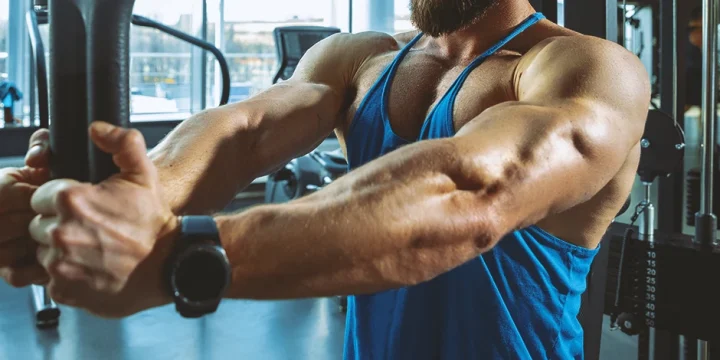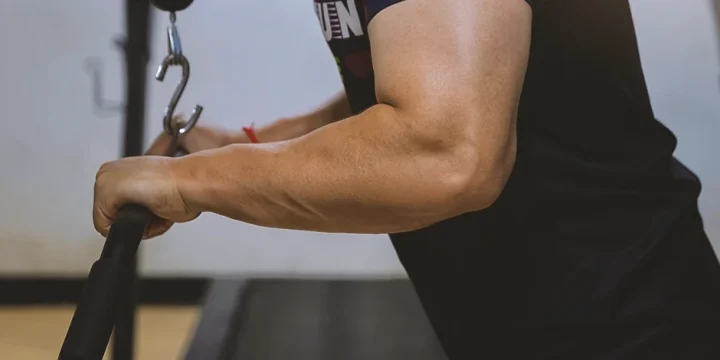If you have been in the bodybuilding game long enough, you know that isolation exercises aren’t the only and the best way to build large feats of strength and muscle mass.
Compound exercises are the most functional but hard movements that use multiple joints and muscle groups to develop superior strength and hypertrophy.
After close examination, a testing phase, and a 20-hours of research, I have singled out only the best compound exercise for building an insane amount of strength and muscle hypertrophy.
After reading the article, you will know all the best compound movements and how to perform them to avoid injuries and increase your workout performance.
Quick Summary
- The best compound exercises are barbell bench presses, dips, barbell deadlifts, squats, bent-over rows, pull-ups, and military presses.
- Integrating these exercises into various workout routines supports diverse fitness goals, such as fat loss, strength building, or endurance training.
- Combining compound and isolation exercises is essential for optimal muscle-building, as per the Asian Journal of Sports Medicine.
- In my opinion, while compound exercises are foundational for strength, incorporating flexibility and mobility workouts enhances overall fitness and reduces injury risk.
The 7 Best Compound Workout for Strength

If you believe an isolation exercise is the best for developing hypertrophy, you are wrong and need to check the list below of the best compound exercises.
To maximize the effectiveness of compound exercises in your fitness journey, it's crucial to understand how to integrate them into different workout routines, whether your goal is fat loss, strength building, or endurance training.
Now, this is not to conclude the only exercises you need to perform are compound.
Still, you must combine both compound and isolation exercises to achieve superior muscle-building results, according to the Asian Journal of Sports Medicine [1].
Compound exercises are not one-size-fits-all; they can be modified to suit beginners with simpler forms or scaled up for fitness enthusiasts seeking a challenge, ensuring everyone from novices to veterans can benefit from these versatile exercises.
Below, you may find the best compound exercises to include in your workout routine to start building muscle immediately.
"Compound exercises are movements that involve motion and (usually) load across more than one joint at a time. Note that this isn’t necessarily the same thing as engaging multiple muscles or muscle groups simultaneously (though they do tend to go hand-in-hand)."
- Jake Dickson, Certified Personal Trainer
1. Barbell Bench Press
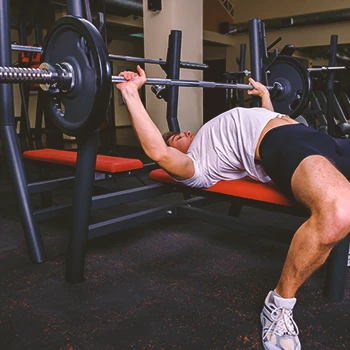
Barbell bench press follows the horizontal push movement pattern and is essential for building upper body strength [2].
It involves multiple muscle groups, including the anterior deltoid, pectoralis major, and triceps brachii.
In my training experience, the barbell bench press has been pivotal for enhancing upper body strength, especially in the chest and arms.
How to Perform a Barbell Bench Press
- Place the barbell on the rack above the flat bench and load it with the appropriate weight so you can perform 5 reps.
- Lie on the flat bench below the barbell, place both your feet on the floor and ensure stability during the whole movement.
- Take a slightly wider pronated grip than shoulder-width apart and ensure your wrists align with your forearms to avoid injuries.
- Unrack the barbell and place it above the level of your upper chest, with your shoulders flexed and elbows fully locked.
- Start the exercise by lowering the barbell towards your chest, horizontally abducting the shoulders, and flexing your elbows.
- When the bar reaches just above the level of your chest, reverse the motion by horizontally adducting your shoulders and extending your elbows to return to the starting position.
- Repeat for 5 reps for 5 sets, and rest between 2 and 5 minutes between each set to fully recover.
Related: What Muscles Does The Bench Press Work
2. Dips
Dips follow a pushing movement pattern and are considered a decline horizontal pushing group member.
They activate lower pectoral fibers, anterior deltoid muscles, and triceps brachii.
From my coaching days, I've seen dips effectively target the lower chest and triceps, making them a staple in upper-body workouts.
How to Perform Dips
- Assume standing in front of the parallel bars where the dips are performed.
- Jump on the parallel bars so you are on the top with your elbows fully extended and shoulders fixed during the whole movement.
- Ensure your core is activated, your spine maintains the physiological line, and your head naturally aligns with your back.
- Start the exercise by lowering your body towards the floor by extending your shoulder joint and flexing your elbows.
- When your middle chest reaches the level of parallel bars, reverse the motion by flexing the shoulders and extending the elbows to return to the starting position.
- Repeat for 4 sets of 8 reps and rest for 3 minutes between the sets.
Related: Dips vs Bench Press
3. Barbell Deadlift
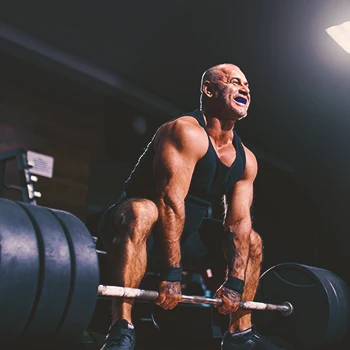
A Barbell deadlift is a technically demanding compound lift following the hinging movement pattern, according to the PloS One [3].
It activates muscles such as your biceps femoris, semitendinosus, semimembranosus, gluteus, and erector spinae.
However, the deadlift is a whole-body movement, so all muscles of your body work synergistically to produce the movement.
Having coached athletes, I've seen firsthand how the barbell deadlift robustly engages the back and leg muscles, enhancing overall power.
How to Perform a Barbell Deadlift
- Place the barbell on the floor before you and load it with the appropriate weight to perform at least 5 reps.
- Stand in front of the barbell with your shins as close to the bar as possible.
- Take a mixed grip, right hand pronated and left supinated, just a little wider than hip-width apart.
- Bend forward with your hips and slightly bend your knees while maintaining your back and head in the natural anatomical position.
- Start the exercise by beginning the triple extension.
- At the same time, extend your ankles, knees, and hips to pull the barbell vertically toward the ceiling.
- Keep your back straight and pull simultaneously with your legs and hips to avoid injuries.
- When you reach the fully extended position in your knees and hips, put the barbell on the floor and repeat.
- Repeat for 5 reps, 5 sets, and rest for as much as needed between the sets.
Related: How To Do The Stiff-Leg Deadlift
4. Squat
Squats are compound exercises following the knee-bend movement pattern. They activate your quadriceps, glutes, hip flexors, and hamstrings.
In my experience, squats are unbeatable for building lower body strength, notably in quads and glutes.
How to Perform Squats
- Place the barbell on the squat rack and load it with the appropriate weight so you can perform at least 5 reps.
- Assume a standing position in front of the loaded barbell.
- Bend and enter the area below the loaded barbell and place it on your upper back with your hands in a pronated grip a little wider than shoulder-width apart.
- Unrack the barbell and take two steps back.
- Place your feet slightly wider than shoulder-width apart and turn them slightly outward.
- Start the exercise by lowering your body towards the floor by bending your hips, knees and dorsiflexing your ankles.
- Hold that position for one second when your thighs become parallel to the ground.
- Reverse the motion to return to the starting position.
- Repeat for 5 reps, 5 sets, and rest from 2 to 5 minutes between each set to fully recover.
5. Bent Over Row
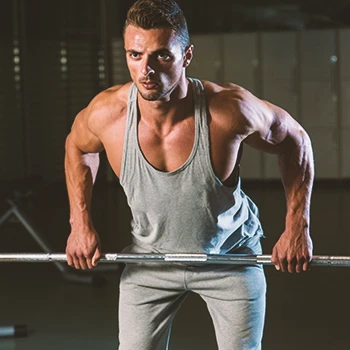
A bent-over row is a standard upper body strength exercise following the horizontal pulling movement pattern.
It activates muscles such as your latissimus dorsi, trapezius, and posterior deltoid to row the barbell toward your stomach.
Through years of coaching, I've found bent-over rows excellent for strengthening the back, particularly the lats and traps.
How to Perform Bent-Over Rows
- Place the barbell on the floor before you and load it with the appropriate weight so you can perform up to 8 reps.
- Assume standing in front of the barbell with your shins almost touching the bar.
- Your feet should be shoulder-width apart. Grip the barbell with a pronated grip a little wider than shoulder-width apart.
- Bend over and ensure your back is flat during the whole movement.
- Start the exercise by pulling the barbell towards your stomach by extending the shoulders and flexings the elbows.
- When the bar reaches the level of your stomach, reverse the motion to return to the starting position.
- Repeat for 8 reps, 4 sets, and rest for 2 minutes in between the sets.
6. Pull-Ups
Pull-ups are an essential compound exercise that follows the vertical pull movement pattern.
They activate muscles such as your latissimus dorsi, trapezius, and posterior deltoid.
Pull-ups, in my training sessions, have proven to be highly effective for developing a strong and muscular back.
How to Perform Pull-Ups
- Assume a hanging position from a pull-up bar a little wider than shoulder-width apart.
- Pull your chin above the bar and hold that position for one second.
- Reverse the motion to return to the starting position.
- Repeat for 4 sets, 5 reps, and rest for 3 minutes between the sets.
7. Military Press
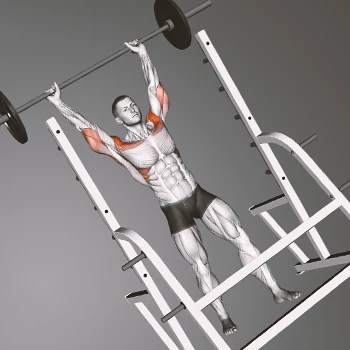
The military press is a compound exercise following the vertical push movement pattern.
It activates muscles such as the upper fibers of the pectoralis major, lateral deltoid, and triceps brachii.
From my coaching perspective, the military press has always been key for shoulder development and upper body strength.
How to Perform a Military Press
- Assume a standing position with the barbell on your collarbone, holding it with your hands a little wider than shoulder-width apart.
- Start the exercise by pushing the barbell above your head until your elbows are fully extended.
- Reverse the motion to return to the starting position.
- Repeat for 5 reps, 5 sets, and rest for 3 minutes between the sets.
Related posts:
FAQs
What Are the Big 5 Compound Workouts?
The big 5 compound workouts are the overhead press, barbell row, pull-ups, squats, and bench presses. You can also add deadlifts to this group since these are all multi-joint exercises activating multiple muscle groups.
What Are the Only 3 Compound Exercises You Need?
The only three compound exercises you need are squat, bench press, and deadlift. These three compound movements will activate multiple joints and muscle groups at the same time to develop superior strength and muscle growth.
Are Compound Exercises the Best for Mass?
Yes, compound exercises are the best for mass. This is because each compound workout routine will activate at least one major muscle group and build hypertrophy, strength, and the lower and upper body.
References:
- https://www.ncbi.nlm.nih.gov/pmc/articles/PMC4592763/
- https://www.frontiersin.org/articles/10.3389/fspor.2020.637066/full
- https://www.ncbi.nlm.nih.gov/pmc/articles/PMC7046193/
About The Author
You May Also Like
